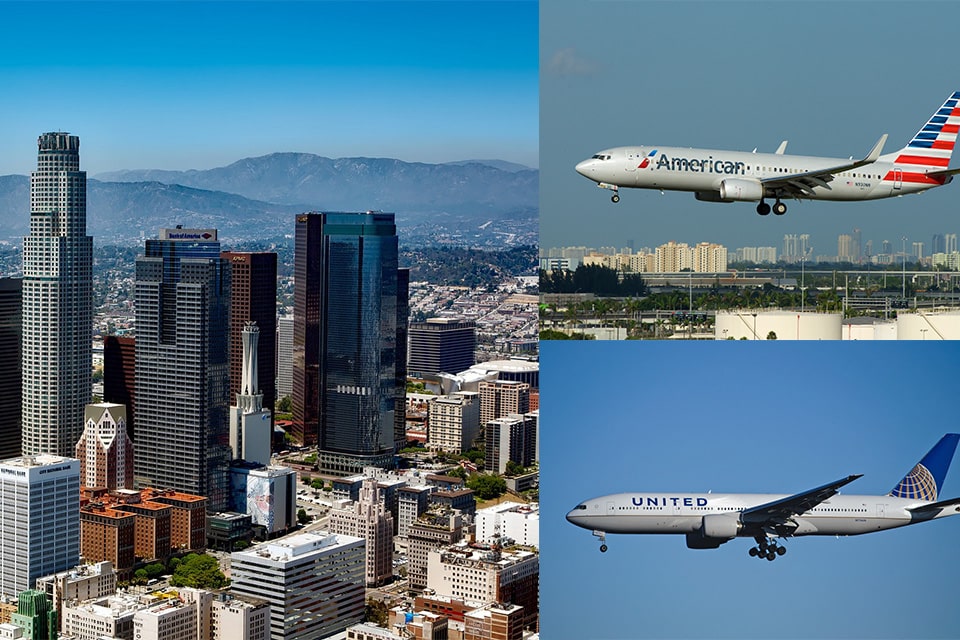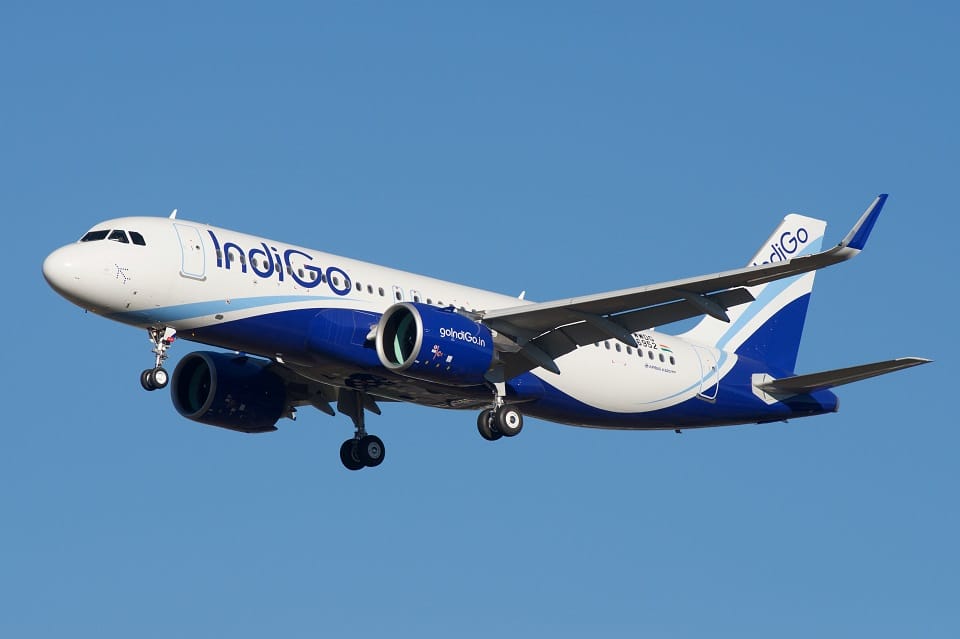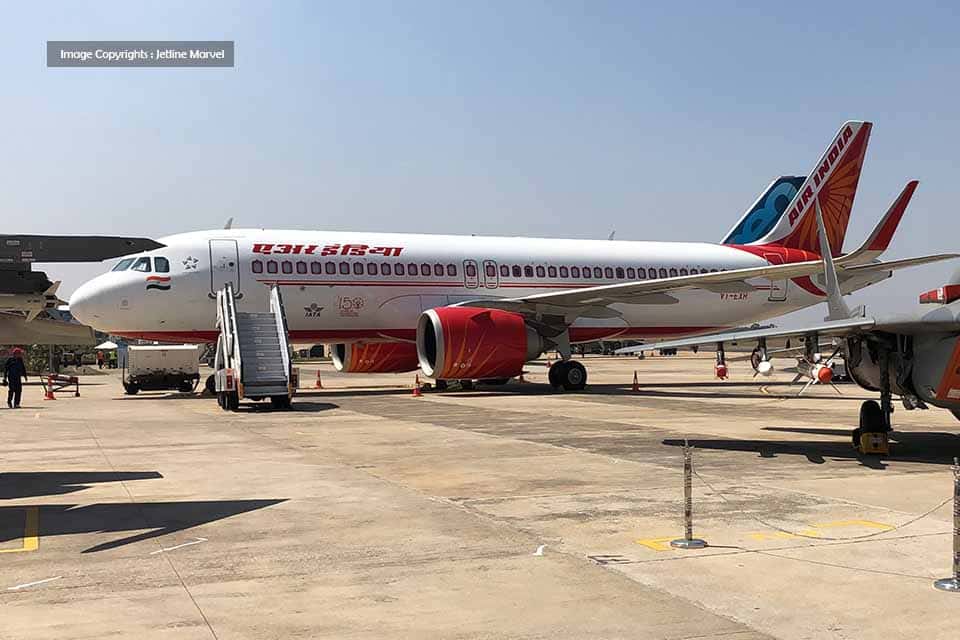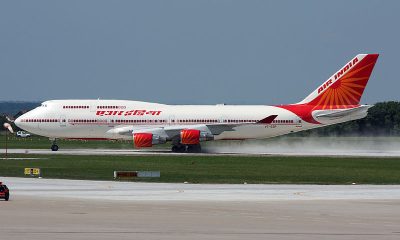Airlines
Top 5 Most Busiest US Domestic Flight Routes by OAG

The domestic aviation market in the US is one of the most recovered in the world, but recently, it has been reported that several US airlines have increased scheduled flight times by small increments to provide that extra buffer and comfort.
Top 10 busiest international air routes in the world(Opens in a new browser tab)
The U.S. domestic flight network includes a wide range of routes that crisscross the country and provides a variety of options to suit different travel demands. Numerous airlines operating on both major and minor routes ensure accessibility and connectivity across the nation, offering everything from short-haul regional flights to transcontinental trips. These routes act as crucial pathways, promoting interstate and interregional trade, tourism, and cultural exchange. According to OAG, We’ve analyzed the flying time for the Top 5 most popular U.S. domestic flight routes.
Most Popular US Domestic Flight Routes
1. San Francisco (SFO) to Los Angeles (LAX): It is the busiest airline route in the United States, with 263 weekly flights (frequencies) in each direction. Flying on this route has slowed this year compared to last, with scheduled flight times now slightly longer. The average flight time is now 1 hour and 33 minutes, and six airlines offer regular service on this route.
2. Los Angeles (LAX) to Las Vegas (LAS): It is the second busiest domestic U.S. route. Similar to SFO-LAX, it offers a less frequent service presently than it did before the pandemic (-22 flights), but more weekly flights than in the previous year (+13 flights). This year, this route’s average flying speed increased somewhat. This year’s scheduled flight times are 1 minute shorter, at 1 hour and 14 minutes.
3. Los Angeles (LAX) and New York (JFK): It has an average scheduled flying time of 5 hours and 33 minutes. There are three airlines flying this route: JetBlue, the largest, with a 36% share of flights, Delta Air Lines with 33% share of flights, and American Airlines with a 31% share.
4. Washington National Airport (DCA) to Boston (BOS): It is the only one of the Top 5 domestic routes which is busier now. With 203 flights each way per week, this is almost a 20% increase on flights. Flying times have got longer, rising from 1 hour 40 minutes.
5. Chicago O’Hare (ORD) to New York (LGA): American, Delta, and United all run this route with no LCC competition. United has the most weekly flights, with 81 of the 200 scheduled, but hasn’t adjusted capacity or flying time since last May. American, has scaled back from 97 weekly flights last year to 69 this year. As a result, average flight lengths have grown, and the fraction of flights that take longer than 2:15 hours has risen to 34% of all flights.

Airlines
IndiGo Awards 45-Day Bonus to Employees Equivalent to 1.5 Months’ Salary

IndiGo, India’s leading airline, has made headlines with its latest announcement of a generous reward for its workforce, celebrating their exceptional contributions throughout the fiscal year 2024.
In a move aimed at recognizing and appreciating their outstanding performance, the company has unveiled the “Thank You Bonus,” equivalent to 1.5 months’ basic salary. This bonus will be disbursed as an ex-gratia payment alongside the May 2024 salary.
The decision comes on the heels of remarkable financial achievements for IndiGo, marked by a notable surge in profits during the third quarter of the fiscal year 2024. With a staggering 110% increase in profits, the airline reported standalone profits of Rs 2,998 crore for the quarter ended December 31, compared to Rs 1,423 crore in the same period of the previous year.
IndiGo’s CEO, Pieter Elbers, has consistently emphasized the company’s resilience in navigating the challenges posed by the pandemic. This substantial bonus underscores the company’s positive trajectory and its commitment to recognizing and rewarding the dedication and hard work of its employees.
Beyond financial success, IndiGo is also dedicated to fostering inclusivity and diversity within its workforce. The Thank You Bonus initiative is not just about monetary appreciation but also about empowering every member of the IndiGo family, including specially-abled colleagues, by providing them with opportunities to showcase their skills and abilities.
Moreover, this move reaffirms IndiGo’s core values of providing an affordable, punctual, courteous, and hassle-free travel experience for all passengers. The airline has consistently prioritized accessibility, ensuring that all its facilities, technologies, information, and privileges are accessible to persons with disabilities.
In sum, IndiGo’s decision to award a 45-day bonus to its employees amid significant profits not only reflects the company’s financial success but also underscores its commitment to its workforce and its values of inclusivity, excellence, and customer satisfaction.
Airlines
A New Player Takes Off: Embraer Poses a Formidable Challenge to Boeing

In the midst of ongoing challenges faced by Boeing and the aviation industry at large, Brazilian aircraft manufacturer Embraer has been thrust into the spotlight.
Recent reports suggesting that Embraer is eyeing the development of a next-generation narrow-body aircraft have sparked intrigue and speculation. However, the company has swiftly moved to quash such rumors.
Internal assessments conducted within Embraer have indeed highlighted the company’s impressive technological prowess and manufacturing capabilities. These findings have led some to speculate about the potential for Embraer to enter the narrow-body aircraft market, traditionally dominated by industry giants Boeing and Airbus.
In light of Boeing’s recent challenges, including the protracted grounding of its 737 MAX jets and leadership upheavals, some industry analysts have suggested that there may be an opportunity for smaller players like Embraer to disrupt the market duopoly. Airbus, too, has plans to introduce a new narrow-body aircraft in the future, further intensifying competition in this space.
However, despite the potential openings created by Boeing’s troubles, Embraer appears cautious about overextending itself. The company is currently focused on maximizing the success of its existing portfolio, which includes the innovative E2 aircraft series.
Additionally, the emergence of alternatives such as China’s Comac C919 adds another layer of complexity to the competitive landscape. While the C919 has thus far secured orders primarily from Asian carriers, Boeing’s challenges could prompt airlines worldwide to explore alternative options.
Airlines
Air India Revised Baggage Rules for Domestic Flights

Air India, one of India’s leading airlines, has implemented significant changes to its baggage policies, affecting travelers across various fare classes.
Effective May 2, 2024, the airline has rolled out a revised baggage allowance scheme, marking a reduction in the permitted weight limits for most fare categories. Under the updated guidelines, passengers booking economy and business class tickets will notice a decrease in their baggage allowance by 5 to 10 kilograms compared to previous allowances.
These adjustments reflect Air India’s response to market dynamics and regulatory requirements. In the Economy Comfort category, encompassing S, T, U, and L fare classes, travelers will now have a baggage allowance of 15 kilograms, down from the previous 20 kilograms. As reported by livefromalounge.
Similarly, passengers availing themselves of Economy Comfort Plus, including G, W, V, Q, and K fare classes, will see their baggage allowance reduced to 15 kilograms from the earlier 25 kilograms.
However, not all fare classes are subject to reductions. Economy Flex passengers, represented by the H, M, B, and Y fare classes, will maintain their previous baggage allowance of 25 kilograms.
In the business class segment, changes are also evident. Business Comfort Plus, consisting of Z and J fare classes, will now offer a baggage allowance of 25 kilograms, down from the prior 35 kilograms. Meanwhile, passengers booking Business Flex tickets under the D and C fare classes will have a revised baggage allowance of 35 kilograms, compared to the previous 40 kilograms.
For passengers planning their upcoming journeys with Air India, it is essential to review the updated baggage policies to ensure compliance and avoid any inconvenience during their travel experience.





















